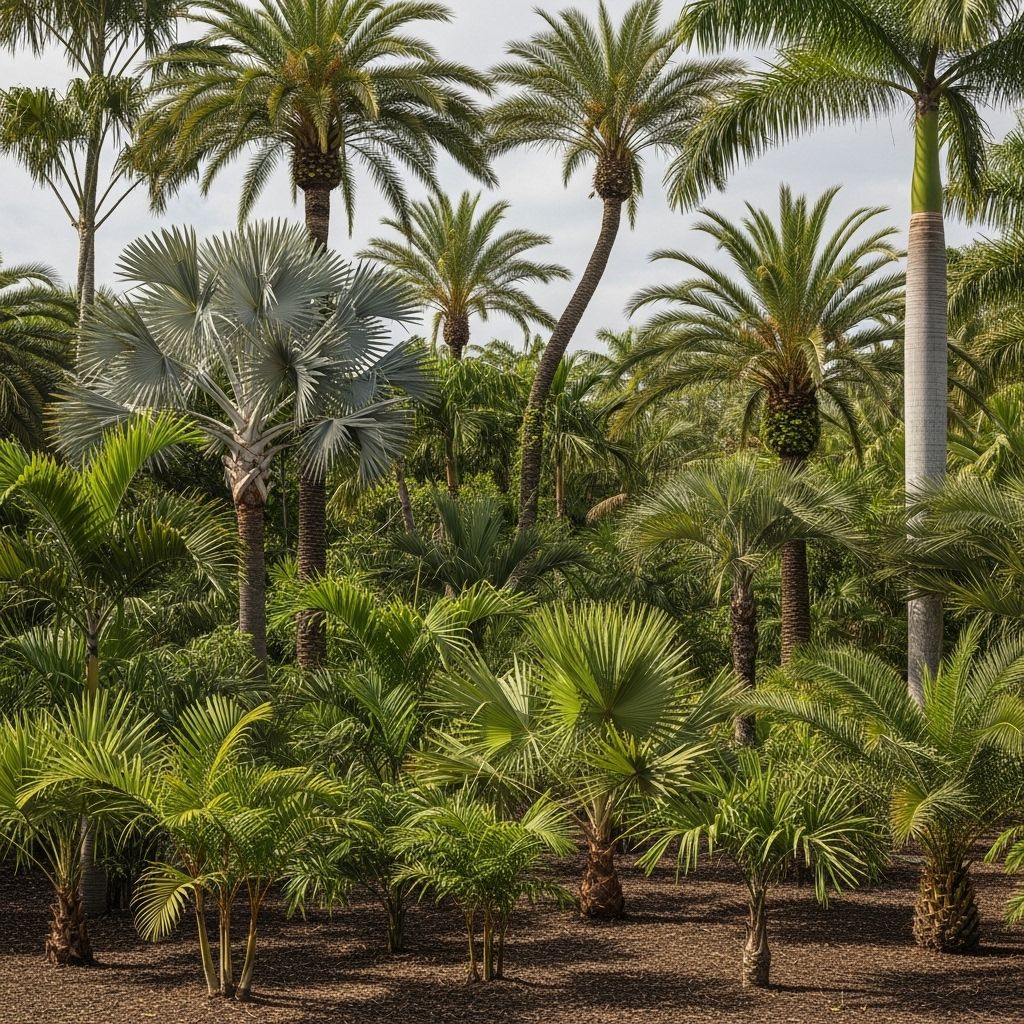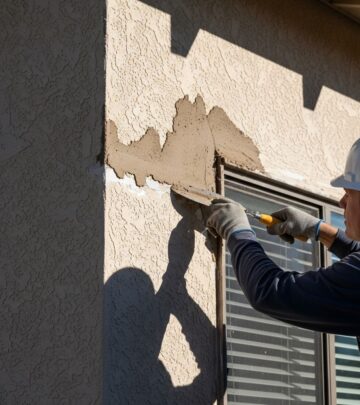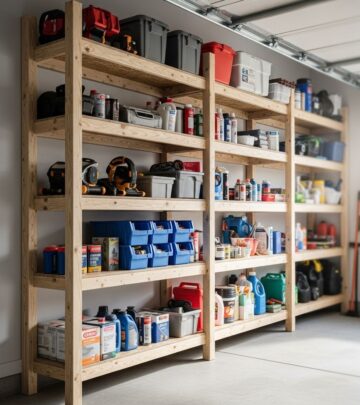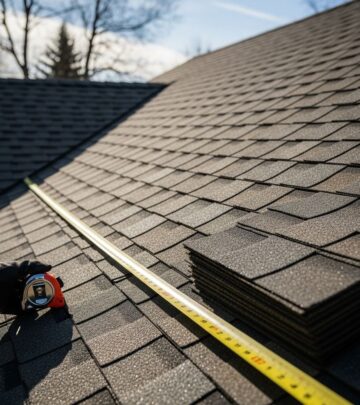Types Of Palm Trees: 21 Varieties To Grow For Every Space
Discover stunning tropical species perfect for any garden craving exotic flair and shade.

Image: HearthJunction Design Team
21 Palm Tree Varieties to Grow: A Comprehensive Guide
When you think of palm trees, images of sun-soaked beaches and tropical landscapes might spring to mind. Yet, there is more to palms than meets the eye. These iconic trees range from towering giants to compact species that thrive indoors, offering versatility, texture, and architectural interest for a range of climates and spaces. Whether your garden is nestled in a warm region or you’re searching for the perfect statement plant for your living room, the world of palms is broad and diverse.
This guide explores 21 remarkable palm tree varieties, including options that are surprisingly cold-hardy, drought-tolerant, or suitable for indoor environments. You’ll find care tips, growth habits, and advice on choosing the right palm for your needs.
Mexican Fan Palm (Washingtonia robusta)
The Mexican fan palm is a fast-growing giant, best suited to spacious outdoor landscapes. Its distinctive, arching fronds form a dramatic canopy, while its slender trunk can soar up to 100 feet tall at maturity. However, be mindful: it is not as drought- or storm-tolerant as some species and may be susceptible to fungal diseases. In some areas, such as California, it can be moderately invasive.
- Hardiness Zones: 9–11
- Light: Full sun
- Soil: Well-draining, loamy, sandy
- Water: Deep irrigation once dry
- Mature Size: 50–100 ft. tall outdoors
Date Palm Tree (Phoenix dactylifera)
Famed for its sweet, edible fruits, the date palm is among the most recognized palms worldwide. These drought-tolerant trees develop elegant, feather-like fronds and reach impressive heights. While young date palms can grow in large containers, mature specimens require ample space.
- Hardiness Zones: 9–11
- Light: Full sun
- Soil: Well-draining, loamy, sandy
- Water: Drought-tolerant but prefers even moisture
- Mature Size: 50–80 ft. tall outdoors
Queen Palm (Syagrus romanzoffiana)
Queen palms are beloved for their graceful, feathery fronds and relatively fast growth. Their moderate size suits suburban gardens and cityscapes, and they produce clusters of bright orange fruit, adding further ornamental appeal.
- Hardiness Zones: 9–11
- Light: Full sun
- Soil: Well-draining
- Water: Moderate
- Mature Size: 40–50 ft. tall outdoors
Foxtail Palm (Wodyetia bifurcata)
The foxtail palm boasts bushy, plume-like fronds that resemble a fox’s tail. Native to Australia, this species adds a touch of the exotic to landscapes and grows rapidly in the right conditions. Its self-cleaning trunk and tidy appearance make it a favorite among gardeners.
- Hardiness Zones: 10–11
- Light: Full sun
- Soil: Well-draining, sandy
- Water: Moderate
- Mature Size: 30–40 ft. tall outdoors
Manila Palm (Adonidia merrillii)
Also known as the Christmas palm, the Manila palm is a popular choice for small gardens and containers. It grows in a slender, upright fashion and produces bright red fruits that ripen around the holidays.
- Hardiness Zones: 10–11
- Light: Full sun to partial shade
- Soil: Moist, well-draining
- Water: Moderate
- Mature Size: 15–25 ft. tall outdoors
Bottle Palm (Hyophorbe lagenicaulis)
With its distinctive, swollen trunk resembling a bottle, this palm adds architectural interest to any garden. It’s slow-growing and does best in warm climates, making it especially popular in tropical landscapes and as a container specimen in cooler regions.
- Hardiness Zones: 10–11
- Light: Full sun
- Soil: Well-draining, sandy
- Water: Moderate
- Mature Size: 10–12 ft. tall outdoors
Ruffled Fan Palm (Licuala grandis)
Prized for its dramatic, circular, pleated leaves, the ruffled fan palm creates an immediate focal point. Its slow growth and compact size make it suitable for containers, patios, and protected outdoor gardens in warm climates.
- Hardiness Zones: 10–11
- Light: Partial shade
- Soil: Rich, moist, well-draining
- Water: Consistent moisture
- Mature Size: 6–10 ft. tall outdoors
European Fan Palm (Chamaerops humilis)
This shrubby, multi-stemmed palm is one of Europe’s only native palm species. It tolerates drought and cooler climates better than many other palms, and its spiky, fan-shaped fronds add texture to gardens and landscapes.
- Hardiness Zones: 8–11
- Light: Full sun to partial shade
- Soil: Well-draining
- Water: Moderate
- Mature Size: 6–20 ft. tall outdoors
Pygmy Date Palm (Phoenix roebelenii)
Perfect for small gardens and container plantings, the pygmy date palm forms a compact silhouette and is popular as a potted plant for patios or entryways. Its delicate, arching fronds and slow growth make it easy to manage.
- Hardiness Zones: 9–11
- Light: Full sun to partial shade
- Soil: Well-draining, sandy
- Water: Moderate
- Mature Size: 6–12 ft. tall outdoors
Windmill Palm (Trachycarpus fortunei)
Known for its cold hardiness, the windmill palm can thrive farther north than most palm species. Its trunk is wrapped in coarse fibers, and it sports slender, fan-shaped leaves ideal for both residential and urban gardens.
- Hardiness Zones: 7–11
- Light: Full sun to partial shade
- Soil: Well-draining
- Water: Moderate
- Mature Size: 20–40 ft. tall outdoors
Arecas Palm (Dypsis lutescens)
The areca palm, sometimes called butterfly palm, is a classic indoor palm but also does well outdoors in subtropical climates. Its feathery, arching fronds grow in dense clumps, creating a lush, tropical look.
- Hardiness Zones: 10–11
- Light: Bright indirect (indoors); full sun to partial shade (outdoors)
- Soil: Well-draining
- Water: Keep evenly moist
- Mature Size: 6–10 ft. indoors; 15–30 ft. outdoors
Sago Palm (Cycas revoluta)
Despite its name, the sago palm is not a true palm but is frequently grown as one due to its palm-like appearance. Its thick, stiff fronds and low, bushy stature make it a popular choice for containers and accent plantings.
- Hardiness Zones: 9–11
- Light: Full sun to partial shade
- Soil: Sandy, well-draining
- Water: Moderate
- Mature Size: 3–10 ft. tall
Lady Palm (Rhapis excelsa)
Lady palms are favored for their adaptability to indoor growing conditions. Their dense, fan-shaped foliage forms a bushy clump, making them ideal for homes and offices. They tolerate low light and dry air better than many other palms.
- Hardiness Zones: 9–11
- Light: Low to bright indirect light
- Soil: Well-draining
- Water: Moderate
- Mature Size: 6–15 ft. outdoors, 5–7 ft. indoors
Bismarck Palm (Bismarckia nobilis)
With striking silver-blue, fan-like fronds, the Bismarck palm is a bold statement piece for spacious landscapes. Its drought-tolerance and striking trunk make it highly sought after in subtropical gardens.
- Hardiness Zones: 10–11
- Light: Full sun
- Soil: Well-draining
- Water: Drought-tolerant
- Mature Size: 30–60 ft. tall outdoors
Fishtail Palm (Caryota mitis)
Named for its unique, jagged leaves resembling a fish’s tail, this palm is often grown indoors or as a multi-stemmed specimen outdoors in humid, warm regions. Its lush, tropical form works well for screening or as a feature plant.
- Hardiness Zones: 9–11
- Light: Full sun to partial shade
- Soil: Moist, well-draining
- Water: Consistent moisture
- Mature Size: 20–25 ft. outdoors, 4–5 ft. indoors
Triangle Palm (Dypsis decaryi)
This palm’s three-sided trunk gives it a unique, architectural appearance. Native to Madagascar, it’s prized for its upright, blue-green fronds arranged in a distinct triangle shape. It prefers well-drained soil and plenty of sunlight.
- Hardiness Zones: 10–11
- Light: Full sun
- Soil: Well-draining
- Water: Moderate
- Mature Size: 25–30 ft. outdoors
Ponytail Palm (Beaucarnea recurvata)
While technically not a true palm, the ponytail palm exhibits palm-like traits with its swollen, water-storing trunk and cascading, grass-like foliage. It’s exceptionally drought-tolerant and makes a stunning indoor accent.
- Hardiness Zones: 9–11
- Light: Bright indirect to full sun
- Soil: Sandy, well-draining
- Water: Allow soil to dry between waterings
- Mature Size: 6–8 ft. indoors, up to 30 ft. outdoors
Kentia Palm (Howea forsteriana)
The Kentia palm is a renowned choice for indoor gardeners. Graceful, arching fronds top its tall, slender trunk, adding a touch of elegance to home and office spaces. It’s tolerant of lower light but thrives with bright, indirect exposure.
- Hardiness Zones: 9–11
- Light: Low to bright indirect light
- Soil: Well-draining
- Water: Keep evenly moist
- Mature Size: 6–10 ft. indoors, 30–40 ft. outdoors
Palm Tree Care Tips
- Light: Most palms thrive in full sun, but some tolerate partial shade or indirect light, especially indoors.
- Water: Let soil dry between waterings for drought-tolerant types. For tropical varieties, maintain even moisture.
- Soil: Well-draining, sandy or loamy soil is crucial. Heavy soils can cause root rot.
- Fertilizer: Apply balanced, slow-release palm fertilizer during the growing season.
- Pruning: Remove dead or yellowing fronds to maintain plant health and appearance, but avoid excessive trimming.
Frequently Asked Questions (FAQs)
Can I grow palm trees indoors?
Yes! Many species such as the areca, lady, and kentia palms are especially suited for indoor environments due to their moderate size and lower light requirements.
Which palm trees are cold-hardy?
The windmill palm (Trachycarpus fortunei) and European fan palm (Chamaerops humilis) are notable for their resilience to cooler temperatures, making them excellent choices for more temperate climates.
What is the fastest-growing palm tree?
The Mexican fan palm (Washingtonia robusta) is among the fastest growers, often reaching up to 3 feet per year under ideal conditions.
Are palm trees drought-tolerant?
Many palms, such as the date palm and Bismarck palm, are quite drought-resistant once established. However, some tropical varieties need regular moisture to thrive.
Are there palms that can handle poor soil?
Most palms prefer well-draining soil, but some—including the queen and date palms—are relatively tolerant of poor, sandy soils as long as drainage is adequate.
Quick Comparison Table of Palm Varieties
| Palm Name | Mature Height | Hardiness Zone | Light | Best Use |
|---|---|---|---|---|
| Mexican Fan Palm | 50–100 ft | 9-11 | Full Sun | Large landscapes |
| Date Palm | 50–80 ft | 9-11 | Full Sun | Ornamental, edible fruit |
| Pygmy Date Palm | 6–12 ft | 9-11 | Full Sun/Part Shade | Small gardens, containers |
| Bottle Palm | 10–12 ft | 10–11 | Full Sun | Accent, containers |
| Windmill Palm | 20–40 ft | 7–11 | Full Sun/Part Shade | Urban, temperate gardens |
Conclusion
With their striking presence and wide adaptability, palms can transform everything from sunny gardens to indoor living rooms into lush, inviting spaces. Choosing the right variety depends on your climate, space, and style preference, but with 21 diverse options, there’s a palm for every need. Use this guide to find your ideal palm and bring a bit of the tropics into your home or garden year-round!
References
Read full bio of Anjali Sayee










